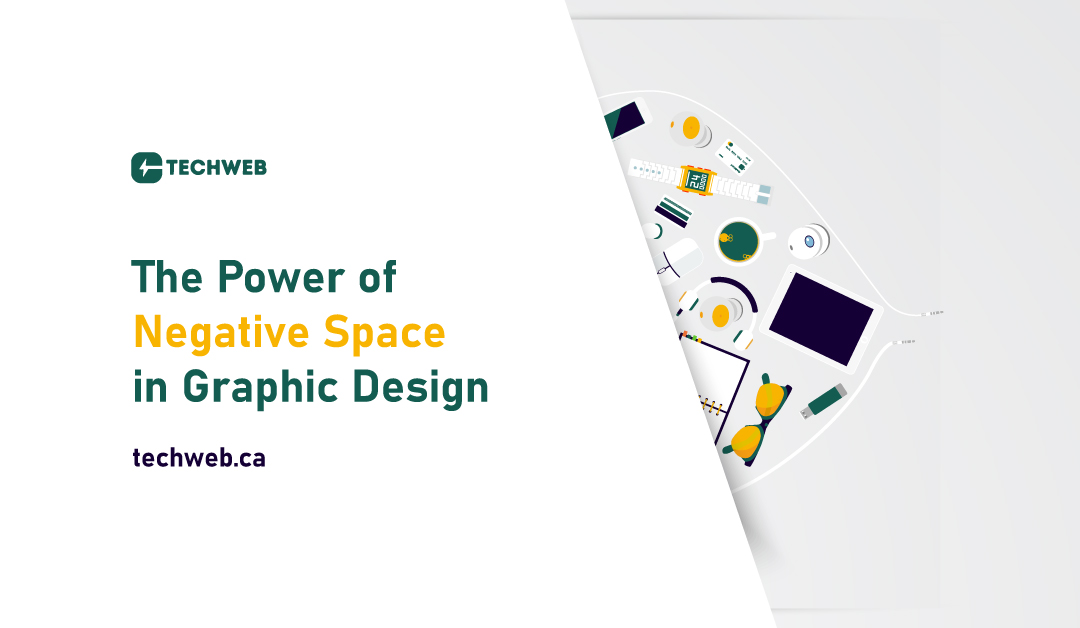In this blog, we’ll explore the power of negative space in graphic design, examining how it can be leveraged to enhance visual impact, convey messages effectively, and elevate the aesthetic appeal of designs.
Understanding Negative Space:
Negative space refers to the areas around and between the subjects or objects in a design. While it may seem like empty space, it serves a critical purpose in balancing the visual elements and creating harmony within the composition. Negative space can be active, where it interacts with the main subject, or passive, where it acts as a backdrop, allowing the primary elements to stand out.
Enhancing Visual Impact:
Negative space has the remarkable ability to draw attention to the focal point of a design. By strategically incorporating ample white space around key elements, designers can emphasize the main subject, guiding the viewer’s gaze and creating a focal point of interest. This technique enhances visual hierarchy, ensuring that the most important elements command attention and stand out amidst the surrounding space.
Conveying Messages Effectively:
Incorporating negative space can also aid in conveying messages and concepts more effectively. By simplifying complex ideas and decluttering the visual clutter, designers can use white space to streamline communication and improve comprehension. Negative space allows for clearer storytelling, enabling viewers to grasp the intended message with ease and clarity.
Fostering Emotional Connections:
The judicious use of negative space can evoke emotional responses and foster deeper connections with the audience. By creating breathing room and allowing for moments of pause and reflection, designers can elicit feelings of calmness, serenity, and sophistication. Negative space encourages contemplation and invites viewers to engage with the design on a deeper, more emotional level.
Elevating Aesthetic Appeal:
White space isn’t just a functional element; it’s also a powerful tool for enhancing the aesthetic appeal of designs. When used thoughtfully, negative space can imbue designs with a sense of elegance, sophistication, and modernity. It creates a sense of balance, harmony, and visual rhythm, elevating the overall aesthetic quality of the composition.
Examples of Effective Use:
- Apple Logo: The iconic Apple logo is a prime example of effective use of negative space. The bitten apple stands out against the clean, white background, creating a striking visual contrast and conveying simplicity, innovation, and elegance.
- FedEx Logo: The FedEx logo features a hidden arrow in the negative space between the “E” and the “x,” cleverly reinforcing the brand’s message of speed, precision, and forward movement.
- WWF Logo: The World Wildlife Fund logo utilizes negative space to depict the silhouette of a panda within the black and white shapes, effectively communicating the organization’s mission of conservation and protection of endangered species.
Conclusion:
Negative space is a powerful yet often overlooked element in graphic design. By harnessing the inherent potential of white space, designers can enhance visual impact, streamline communication, evoke emotions, and elevate the aesthetic appeal of their creations. Whether it’s creating focal points, conveying messages, fostering emotional connections, or simply enhancing aesthetics, the strategic use of negative space is a hallmark of effective and impactful design. As designers continue to explore the possibilities of white space, they unlock new avenues for creativity, innovation, and visual storytelling, shaping the future of graphic design in profound and meaningful ways.

